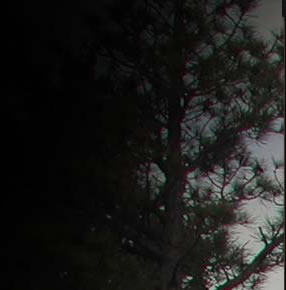
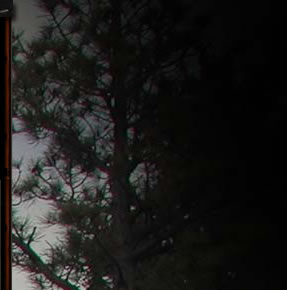

The Reverse Guide to Digital Cameras for the Outdoors
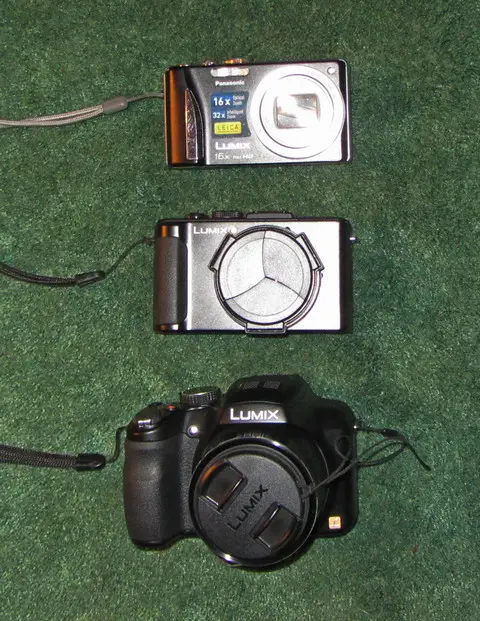
From the top: Pansonic ZS-15, LX-7, FZ60.
It is common knowledge that more images are taken with cellphones than cameras by a huge margin. For this extent of this to really hit home, consider that the Chicago Sun-Times recently fired its entire photography staff, claiming that the business model of journalism demands more video-generated content. In place of the full-time professionals, the Chicago Sun-Times said it would train journalists to engage in photography with iPhones. The iPhone 5 has an 8MP onboard camera and can take acquire decent pictures in ideal conditions, despite its quite tiny 1/3.2 inch sensor. Yet, camera debates rage on about the limitations of the point and shoot 1/2.33 in. sensor, which is comparatively large to the iPhone sensor. Yet, the iPhone works, and works often. What gives?
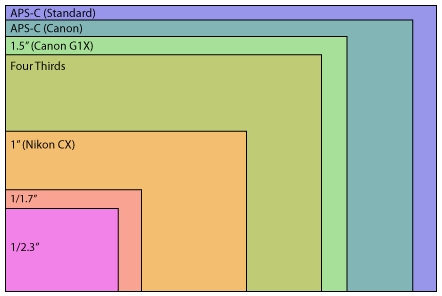
Obviously, sensor size isn't the only factor, or iPhones wouldn't work. Nor is the size of the image acquired in pixels, as the improved 8 meg iPhone images create plenty of snapshots, 8 x 10s, and countless web images. Apparently, if not good, good enough for someone at the Chicago Sun-Times. For outstanding images, you need a good lens, a good microprocessor and software (the engine) and a good sensor.
But, the camera that is with you is always fabulously more useful than the one that isn't, which explains the pervasiveness of cellphone images, even if they are phones to start with. Searching for Sugar Man won the won the 2013 Academy Award for Best Documentary Feature. After running out of money, director Malik Bendjelloul finished shooting the Oscar-winning documentary 'Searching For Sugar Man' on an iPhone app: “8mm Vintage Camera” sells for one dollar and ninety-nine cents.
It can be confusing, both from manufacturer's claims and from various and sundry commentary that while sometimes well-meaning, has little to do with most photography. The most important consideration going in is what the intended final result is going to be. Internet images, snapshots? If prints, something larger than a framed 8 x 10 or a coffee mug? What is the largest, clearest image you need to acquire? What about video quality? That may not be important for some, yet video is a component of still cameras just as cameras themselves are now a component of cellphones. Is it YouTube, your own DVDs, or your own Blu-Ray discs?
Moving down the line, how much bulk and weight are you willing to carry on a regular basis? If you aren't interested in anything larger than a light shirt pocket camera, there are limitations built in: battery life, shooting performance, and zoom to a degree. What about low-light, a component that has no universally defined condition of exactitude. What about flash capability?
I'll offer up three ways to go about it, using three cameras that I use regularly. These happen to be Panasonic, but there are Canon, Sony, and Nikon alternatives that match the capabilities more or less.
Panasonic ZS-15

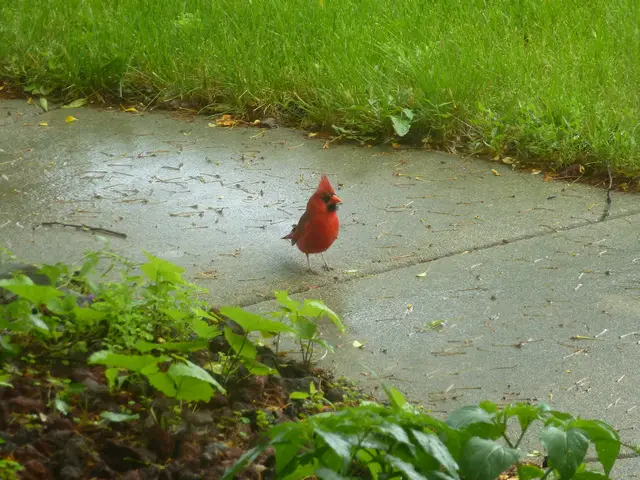
Whether the always around non-migratory Illinois geese, or a cardinal appearing after a spring rain, the ZS-15 is the easiest camera of the bunch to always have with you. It also is light enough to use as a point-of-view video camera, with better output than most "action" cameras.
By now, it is last year's model. It offers 16x optical zoom, the big negative to cellphone cameras, more resolution, and a larger sensor (though still tiny) compared to the iPhone route, plus a good array of manual controls and modes. It doesn't have the brightest lens, but is very fast in operation, battery life is just okay, but a factor in video and in cold weather. It is the easiest camera to always have with you, uses the sensor from the FZ-150 bridge camera, yet lacks hyper-critical image quality that you might never see in final output. The LCD has poor viewing angles. It is enticingly small in size and price.
Panasonic LX-7

With no flash inside the Flamingo in Las Vegas, the LX-7 was able to capture a noise-free image at ISO 80.
A brighter lens, larger sensor, still portable, and low-noise to no-noise images. Better battery life as well, and stunningly good video. It shoots RAW as well as JPEG, so those that enjoy digital lightroom tweaking have the “negative” with all the information to experiment with. Its 3.8x optical zoom, while sufficient for many applications and 3.8 times more than your smartphone, is weak compared to many pocket point and shoots, perhaps its main limitation. The LX-7 yields outstandingly good results in dim and complicated lighting situations.
Panasonic FZ60


A roughly one pound bulky box that isn't going into anyone's shirt pocket, the 24x optical / 48x intelligent zoom gets you closer to small things that are close and larger things farther away. The FZ60, in addition to a better LCD than the ZS-15, has a color electronic viewfinder that will save the day in very bright light, something the LX-7 lacks in the box though the excellent DMW-LVF2 EVF is available as an approximately $180 accessory, yet it does increase the bulk of the LX-7 unit as well as acquisition cost.
There are few things as comical-looking as a blue heron walking through a freshly planted cornfield, above. While the FZ60 was able to grab an image of him at 48x Intelligent Zoom off-hand, a usable image wouldn't be possible with the ZS-15 much less the comparatively diminutive zoom of the LX-7. The same goes for a crafty goose poking his head out of the grass. While the factory FZ60 battery is rated at 895mAh, aftermarket batteries are often 1200mAh or so, bumping the 450 shot life to an excellent 600 images or so.
Finally
If all that we ever wanted was a 3.8x optical zoom, the choice would be quite easy. In terms of image quality, video quality, particularly image quality under dim light or complex lighting situations, the LX-7 wins by every conventional standard that can be applied. If you are confident you can always get close to your subject matter, it is the pick of this litter. For hunting, the outdoors, and the general notion of a travel camera, the 3.8x optical / 7.5x Intelligent zoom often isn't nearly enough even though this level of camera leaves the smartphone in the dim dusky dust of no optical zoom, nasty low-light performance, and little in the way of manual controls, and on it goes.
The most versatile camera of the lot is the FZ60, with its 450 shot battery life, EVF, 24 times optical / 48 times intelligent zoom, powerful integral flash, and "very good plus" images. Though its approximate one pound weight is still light compared to system cameras, it is far more bulky than the the other two examples, and isn't the camera you might be inclined to have with you all the time. While the LX-7 can give you low light / no flash images the others cannot, the 6.3 times greater optical zoom of the FZ60 gives you still images and video the LX-7 just cannot reach, and the same is true versus the ZS-15 although the margin is 150%, not 630% more powerful zoom.
By no means am I trying to cover the massive spectrum of cameras, as there are plenty of other choices out there. For example, the Canon Powershot G15 is an alternative to the LX-7 Panasonic, with a bit more powerful 5x optical zoom and an optical viewfinder. Again, though images at close range and in low light can exceed the smaller-sensored FZ60 and ZS-15 cameras, much outdoor work will quickly have you longing for more zoom ability. An alternative to the ZS-15 is the 20x zoom Canon SX260, while saddled with a slow F3.5 - F6.8 lens an weak battery life, it generally takes good images as does its predecessor the SX230 . . . that used to be one of my most often-used cameras.


The in-camera image processing of the FZ60 is a lot more than trivia. The first image of the dove was shot in Intelligent auto mode and was horribly back-lit. A touch of the button with the High Dynamic Range post-processing, and viola! The dozy dove now actually looks like a dove.
The best outdoor, hiking, and travel camera of this trio is the FZ60. Yet, it is the least appealing camera to have with you all of the time of this group as well, just because of the bulk. The lens, powerful flash, manual focus, larger battery, and EVF means more bulk and weight; it is difficult to escape. As a optional matter, you can step up to the FZ200 Panasonic, the same platform as the FZ60 with a faster lens, RAW, etc., at about twice the price. If you build your camera choice based on what zoom you need and what level of bulk you can tolerate, you'll be happiest in the long term. While the FZ60 is not the low-light champion Consumer Reports suggests that it is, its F2.8-5.2 lens is brighter than the ZS-15, doing surprisingly well indoors and weak light as long as you lay off the zoom.
Copyright 2013 by Randy Wakeman. All Rights Reserved.

Custom Search



